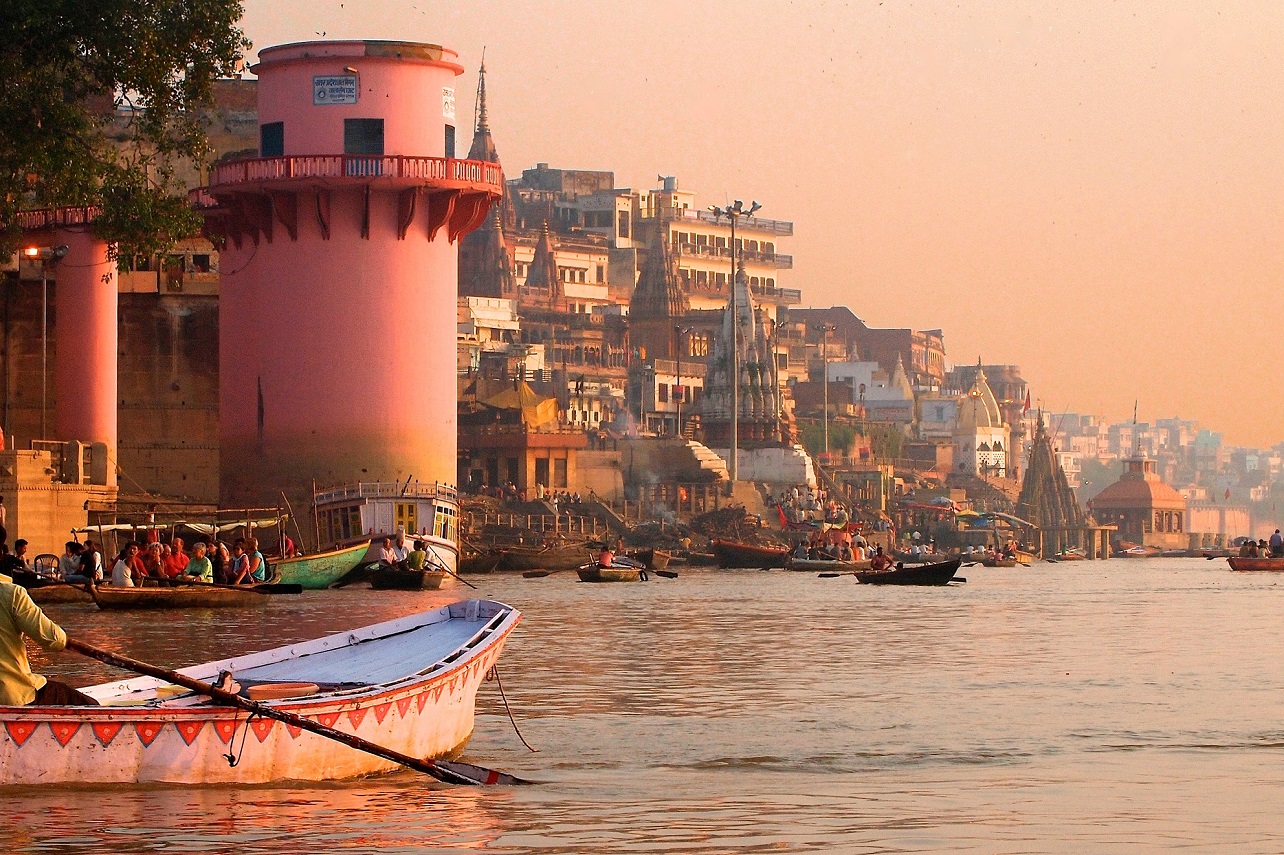
Hinduism
The Many Tirtha Yatras
There are many pilgrim circuits in Hinduism connected to various deities. These are the most sacred and ancient ones
Over the centuries Hindu pilgrims have developed many routes and journeys that meet their spiritual needs. These pilgrimages or tirthayatras are often connected to the god or goddess they venerate the most. There are ancient paths for the worshippers of Lord Vishnu or Lord Shiva, the Devi or even the banks of a sacred river like the Ganges or the Narmada. Among the most sanctified are the seven Saptapuris, the four Chaar Dhaams of Lord Vishnu, the twelve Jyotirlingams of Lord Shiva and the fifty one Shakti Peethas of the Devi. There are hundreds of tirthas, here we give you information about the most popular ones.
Saptapuris
“Kashi, Kanchi, Maya, Ayodhya, Avantika.
Mathura, Dwaravati chaiva saptaita mokshadayika.”
This Sanskrit shloka lists the Saptapuris, the tirthasthanas of Kashi (Varanasi), Kanchi (Kanchipuram), Mayapuri (Haridwar), Ayodhya, Avantika (Ujjain), Mathura and Dwaravati (Dwarka).
The Saptapuris are described as “mokshadayika”, because it is believed that the presence of our gods is the strongest here and they promise moksha, the freedom from the endless cycle of birth and death. They are among the oldest tirthayatras and it is said in the Mahabharata that after the battle at Kurukshetra the five Pandavas visited all of them to atone for the sin of killing their kinsmen.
At Varanasi, Uttar Pradesh, the most sacred shrine is the Kashi Vishwanath Temple dedicated to Shiva. It is by far the most important tirtha for a Hindu with many temples and the Ganga River flowing past 108 ghats. At Kanchipuram, Tamil Nadu we have one of the most ancient stone temples in India – the Kailasanatha Temple built by Pallava kings in the 6th century AD and dedicated to Shiva. Other important shrines include Vaikuntha Perumal and Varadaraja temples, dedicated to Vishnu.
Haridwar in Uttarakhand stands at the sacred spot where the River Ganga flows down from the Himalayas and on to the plains. Here the worship of the river is of prime importance and pilgrims bathe at ghats like Har ki Pauri and Brahmakund.
Ayodhya, standing by the Sarayu River is the birth place of Rama, the seventh avatar of Vishnu. He is the magnificent hero of the epic The Ramayana and a multitude of temples commemorate the various episodes of his life.
Dwarka stands at the shore of the Arabian Sea in Gujarat and is the site of the kingdom of Krishna after he shifted his people from Mathura. It is counted among the Saptapuris and is also a Chaar Dhaam of Vishnu.
Mathura by the Yamuna River in Uttar Pradesh is the kingdom of Krishna, the eighth avatar of Vishnu. He was born here in the land called Brajbhoomi. Mathura and the nearby town of Vrindavan are redolent with the legends of the god-king and the Krishna Janamasthana Temple is the most sacred shrine here. The ancient town of Ujjain by the Shipra River in Madhya Pradesh was once called Avantika. It was a great centre of learning and the famous poet Kalidasa lived and worked here. The most sacred shrine is the Mahakaleshwar Temple dedicated to Shiva which is a Jyotirlingam.
Char Dham of Lord Vishnu
The four pilgrimages of Badrinath, Dwarka, Puri and Rameswaram are dedicated to the various aspects of Lord Vishnu and are called Chaar Dhaam. The myths and tirthas of Lord Vishnu can be found in the Vishnu, Vayu and Bhagavad Puranas. The Chaar Dhaams are placed at the four cardinal points of the Indian subcontinent. Badrinath in the Himalayas of Uttarakhand; Dwarka in the west by the Arabian Sea in Gujarat; Puri in the east by the Bay of Bengal in Orissa and Rameswaram in the south, by the Indian Ocean in Tamil Nadu.
Lord Vishnu’s Daily Journey
The Chaar Dhaams are the favourite abodes of Vishnu that he visits every day. In Hindu mythology Brahma creates the universe, Vishnu preserves it and Shiva is the celestial destroyer so that the cycle of creation can start all over again. The Chaar Dhaams are a part of the role of preservation for Vishnu, who is the divine monarch.
It is said that he starts his day by bathing in the Alakananda River that runs past Badrinath. Then he travels to Dwarka where he gets dressed in his golden robes and gorgeous jewellery. At Puri he is offered a magnificent meal of fifty six dishes called Chhappan Bhog. Everywhere, this kind and generous deity has the time to listen to the prayers of his devotees. Then finally he arrives at Rameswaram for a well earned rest after the arduous task of preserving all creation.
For thousands of years Badrinath has been the land of sages. The Alakananda River flows beside it and the peak of the Neelkanth Mountain is visible from here. Famous rishis like Kapila, Kashyapa and Narada are a part of the spiritual traditions. One of the greatest sages to come here was Adi Shankaracharya who established a monastery at nearby Joshimath.
Dwarka is both a Saptapuri and a Chaar Dhaam, and so it is considered twice blessed. It was built by Krishna as the capital of his new kingdom. Dwarka means a door and he wanted his city to be the gateway to peace and serenity. Here the temples celebrate the exploits of this warrior-king. Today he is worshipped at the Dwarkadheesh Temple with a soaring shikhara that flies the saffron flag of Vishnu.
The heart of Puri is the Jagannatha Temple where Vishnu is worshipped as Lord of the Universe and has his brother Balarama and sister Subhadra beside him. The images of these three deities are very unusual, being blocks of wood carved into huge eyed faces and brightly coloured. They are taken out in procession once a year and the Rath Yatra is the most famous chariot festival in the country.
Lord Rama came to Rameswaram on his way to Lanka to rescue his wife Sita who had been abducted by the demon king Ravana. Here he built a bridge across the sea and then worshipped Shiva and the warrior goddess Durga, praying for victory. So here an avatar of Vishnu worshipped Shiva and this makes Rameswaram a Harihara Tirtha – both a Shaiva and a Vaishanav pilgrimage.
Jyotirlingam of Lord Shiva
The twelve Jyotirlingam are considered to be the most sacred Shivalingams of the land. Lord Shiva is Ishvara and shaivites worship Shiva in his symbol, the lingam. Each Jyotirlingam has its own name – like Vishwanath, Mallikarajuna or Somnath- that describes the various aspects of Shiva. The myths and tirthas can be found in the Matsya, Shiva, Skanda and Agni puranas.
The Shivalingam of Light
Jyotirlingam means the lingam of light and there is a famous myth that tells us how this celestial lingam appeared on earth. It seems Brahma, Vishnu and Shiva could not agree about who was the greatest among them. So they consulted the Vedas and the sacred books declared that Shiva was the greatest. Both Brahma and Vishnu protested and this made the volatile Shiva lose his temper. He transformed himself into an endless column of glittering light that pierced the sky, the earth and the netherworld. Varanasi is where this column of light is said to have first appeared.
Brahma and Vishnu wanted to know where this fiery column began and where it ended. Vishnu turned himself into a boar and began to dig into the earth and Brahma flew up to the sky on the back of his swan. However even after centuries they could not find the ends. On returning to earth Vishnu admitted that he had failed and then the column became smaller and became a Shivalingam.
Brahma, reluctant to admit defeat claimed he had seen the end of the column in the sky. At this Shiva, lost his temper again and turned into the angry Bhairava and he cut off one of the five heads of Brahma. However this head stuck to Shiva’s hand and he had to go to Kedarnath to perform an atonement to be freed of his burden. A Jyotirlingam is believed to be ‘swayambhu’, that is it has appeared on its own and the twelve are called Dwadash Jyotirlingam. These are:
1. Kedarnath (Himalayas, Uttarakhand)
2. Kashi Vishwanath (Varanasi, Uttar Pradesh)
3. Vaidyanath (Deoghar, Jharkhand)
4. Mahakaleshwar (Ujjain, Madhya Pradesh)
5. Omkareshwar (Indore, Madhya Pradesh)
6. Nageshwar (Dwarka, Gujarat)
7. Somnath (Gujarat)
8. Triyambakeshwar (Nasik, Maharashtra)
9. Grishneshwar (Aurangabad, Maharashtra)
10. Bhimashankar (Mahabaleshwar, Maharashtra)
11. Mallikarjuna (Srisailam, Andhra Pradesh)
12. Ramanathaswamy (Rameswaram, Tamil Nadu)
Kedarnath is the northern-most Jyotirlingam. It stands close to the source of the Mandakini River which later merges with the Alakananda and forms the mighty Ganga. One of Hinduism’s greatest sages, Adi Shankaracharya gained moksha here. In Varanasi, the Jyotirlingam is at the Kashi Vishwanath Temple, built by Rani Ahalya Bai Holkar of Indore in the 19th century at a site of many earlier shrines. It is also called the Golden Temple as its spires were gold plated by Maharaja Ranjit Singh of Punjab.
The Vaidhyanath Jyotirlingam is at Deoghar in Jharkhand and the myth says that Ravana worshipped Shiva here. This is also called the Arogya Jyotirlingam as devotees come here to pray to be healed. At the Mahakaleshwar Temple at Ujjain, Shiva is worshipped as the Lord of Time and Death. Here the mammoth gathering of the Kumbh Mela is held every twelve years. Another Jyotirlingam is the Omkareshwar Temple, where King Mandhata, an ancestor of Lord Rama, prayed to Shiva. It is situated near Indore on an island in the Narmada River.
The ethereally beautiful temple at Somnath in Gujarat stands by the shores of the Arabian Sea and was legendary for its wealth and that led it to be attacked and looted many times by the Muslim invader Mahmud of Ghazni but Somnath rose again. Somnath and Rameswaram are the only two Jyotirlingams that are situated by the sea. It is also a place where both Shiva and Vishnu are worshipped and is thus called a Harihara Jyotirlingam. Nearby is another Jyotirlingam at the Nageshwar Temple at Dwarka where Lord Shiva is worshipped as the Lord of the Snakes.
The Triyambakeshwar Temple near Nasik in Maharashtra is named after the third eye of Shiva that opens to turn the world into ashes. The temple stands by the banks of the Godavari River and has three Shivalingams that symbolise the aspects of the Trinity of Brahma-Vishnu-Maheshwar. Another Jyotirlingam is at the Grishneshwar Temple near Ellora. The temple was originally built by the grandfather of Chhatrapati Shivaji. The Bhimashankar Temple is at Mahabaleshwar beside the Bhima River. Here Lord Shiva is said to have battled a demon and his sweat fell here to create the river.
There are two Jyotirlingams in the South at Srisailam and Rameswaram. The Mallikarjuna Jyotirlingam at Srisailam has one lingam in the garbha griha and five more outside. These five Shivalingams are said to have been installed here by the Pandava brothers of the Mahabharata. Finally the southern most of the Jyotirlingam temples is the Ramanathaswamy Temple at Rameswaram. It is sacred to both the Shaivites and the Vaishnavites as here an avatar of Vishnu, worshipped Shiva. Rama was praying for victory in his war against Ravana. So like Somnath this is a Harihara Jyotirlingam.
Shakti Peetha of Devi
The word ‘Devi’ simply means the Goddess. Hindus have imagined her in many aspects – as Parvati the kind mother, Annapurna the generous provider of food and also as the strong and ruthless fighter Durga who protects the earth from evil. She is also the consort of the gods – Saraswati of Brahma, Lakshmi of Vishnu and Gauri of Shiva. Her power is her Shakti and her shrines are called Shakti Peethas. The myths and tirthas of the Devi can be found in the Markandeya and Devi Bhagavat Puranas and the books of praise called the Chandi and Devi Mahatmyas.
Sati & Lord Shiva
The earliest myth of the Devi has her as Sati, the daughter of the sage Prajapati Daksha and she falls in love and marries Shiva. Unfortunately Daksha does not approve and insults Shiva by not inviting him to a yagya. When she finds this out Sati feels so humiliated that she kills herself. When he hears this Lord Shiva goes mad with grief and destroys the yagya. Then carrying Sati’s body on his shoulders he begins to dance the tandava which would destroy the world.
The gods are full of fear and pray to Vishnu who comes to the rescue and using his celestial discus the Sudarchana Chakra, cuts Sati’s body into fifty one pieces. Once he can no longer feel the weight of her body, Shiva’s sorrow abates and he stops his tandava and thus the world is saved.
The fifty one places where parts of Sati’s body fell were sanctified as pilgrimages and are called the Shakti Peethas. Some like the temples at Varanasi, Kanchipuram and Kamakhya are famous and very popular with pilgrims while others have been forgotten and are no longer in the pilgrim circuit.
The most famous Shakti Peethas are located at
1. Vishalakshi Temple, Varanasi, Uttar Pradesh
2. Jwalamukhi Temple, Kangra, Himachal Pradesh
3. Kanya Kumari Temple, Tamil Nadu
4. Kamakshya Temple, Guwahati, Assam
5. Tripurasundari Temple, Agartala, Tripura
6. Kalighat Temple, Kolkata, West Bengal
7. Pashupatinath Temple, Kathmandu, Nepal
8. Kamakshi Temple, Kanchipuram, Tamil Nadu
9. Vairat Temple, Jaipur, Rajasthan
10. Bhuteshvara Temple, Vrindavan, Uttar Pradesh
There are many conflicting lists of all the peethas and pilgrims do not try to visit all of them. The most accepted number of Shakti Peethas is fifty one but there are even lists of up to one hundred and eight shrines. Many are in very obscure places and some cannot be located clearly. Among the other sites that are mentioned are: Jalandhar, Kolhapur, Ladakh, Godavari River, Ujjain, Burdwan, Nasik, Chennai, Pushkar, Allahabad and Puri. There is one next to the Mansarovar Lake in China and three in Bangladesh. There are innumerable other Devi shrines that do not claim to be shakti peethas like at Vaishno Devi in Jammu, the Meenakshi Temple at Madurai or the Kalkaji in Delhi that have gained great sanctity among the faithful.
Other Tirthas
South India
Putaparthy, Vishakhapatnam, Warangal, Trivandrum, Thrissur, Mahabalipuram, Madurai , Kanyakumari
West India
Ambaji, Akshardham, Elephanta Caves, Khajuraho temples
North India
Thanesar, Udaipur, Sawai Madhopur, Pushkar, Bikaner, Allahabad
East India
Ranchi
Find Your Perfect Read
Explore More
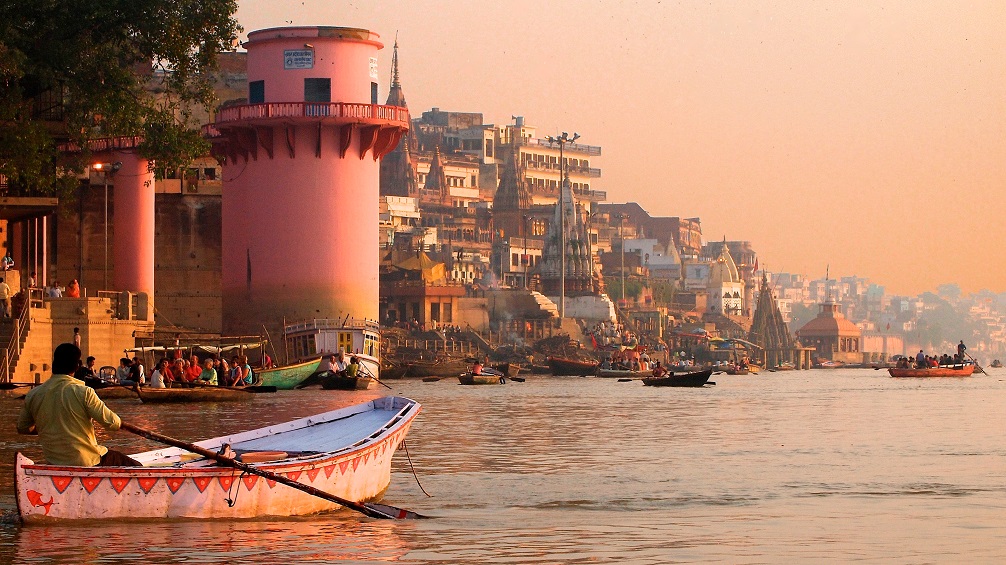
Hinduism
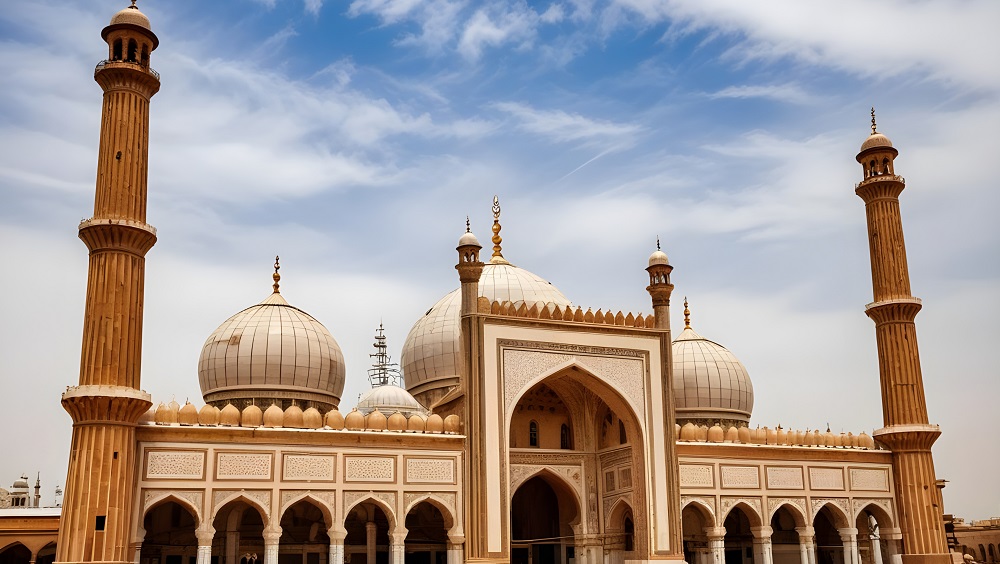
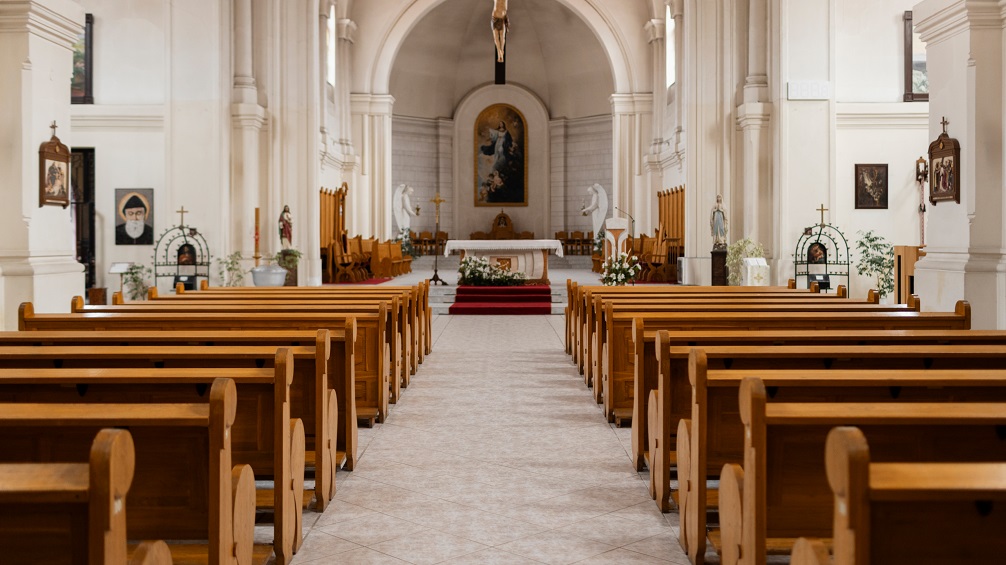
Christianity
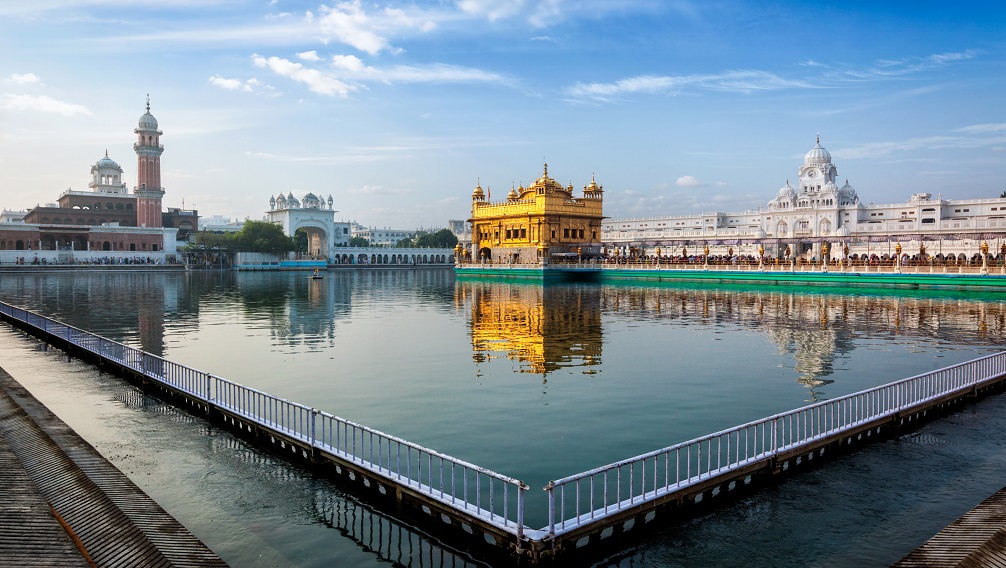
Sikhism
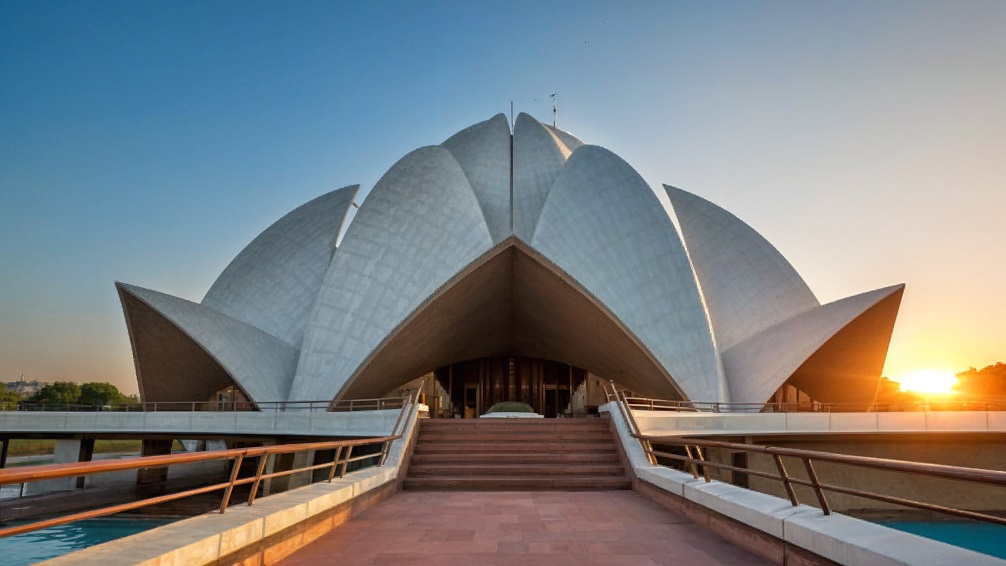
The Baha'i Faith
The Baha’i faith is a modern religion that preaches a faith that emphasizes the spiritual unity of all mankind...
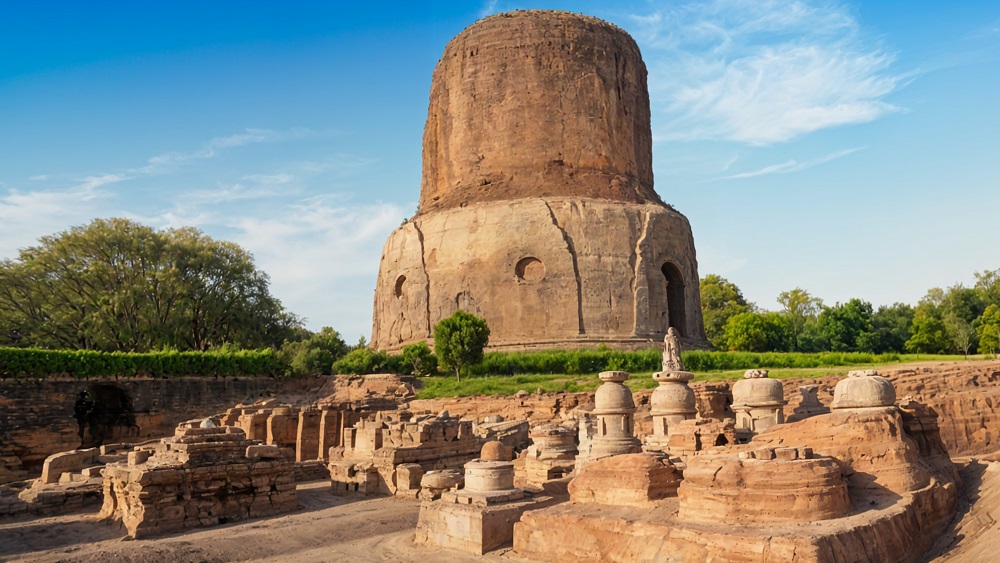
Buddhism
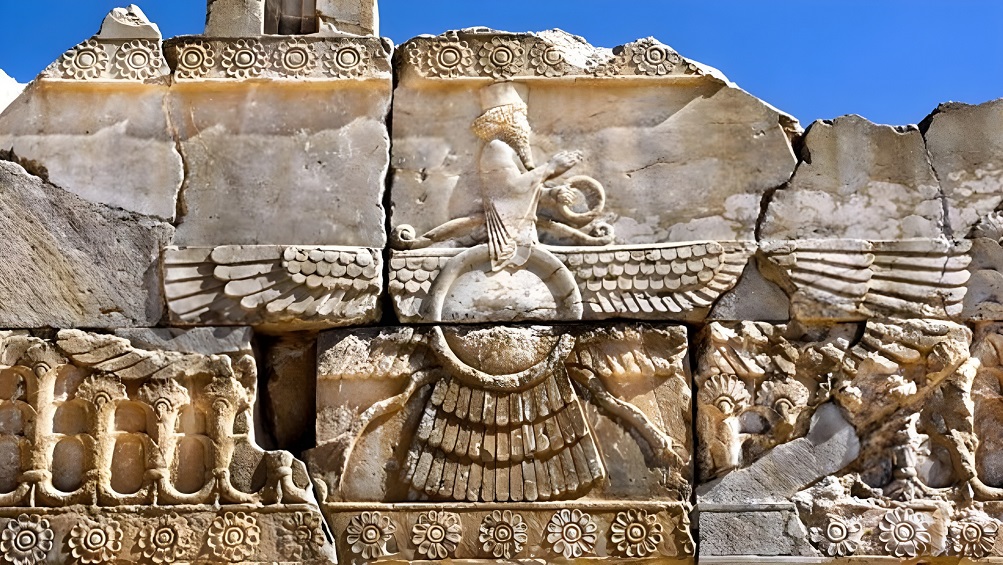
Zoroastrianism
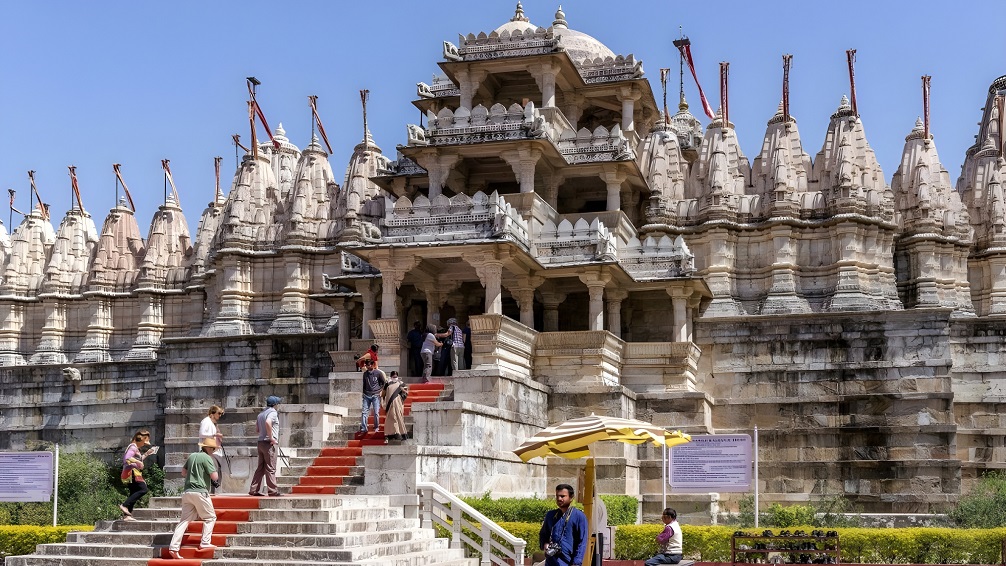
Jainism
The sixth century BC was a period of great intellectual ferment in India. This was the time...

